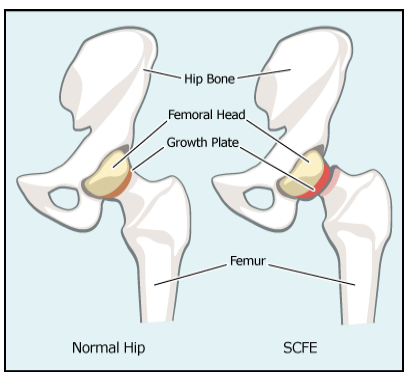Makindo Medical Notes"One small step for man, one large step for Makindo" |
|
|---|---|
| Download all this content in the Apps now Android App and Apple iPhone/Pad App | |
| MEDICAL DISCLAIMER: The contents are under continuing development and improvements and despite all efforts may contain errors of omission or fact. This is not to be used for the assessment, diagnosis, or management of patients. It should not be regarded as medical advice by healthcare workers or laypeople. It is for educational purposes only. Please adhere to your local protocols. Use the BNF for drug information. If you are unwell please seek urgent healthcare advice. If you do not accept this then please do not use the website. Makindo Ltd. |
Slipped Upper Femoral Epiphysis (SUFE)
-
| About | Anaesthetics and Critical Care | Anatomy | Biochemistry | Cardiology | Clinical Cases | CompSci | Crib | Dermatology | Differentials | Drugs | ENT | Electrocardiogram | Embryology | Emergency Medicine | Endocrinology | Ethics | Foundation Doctors | Gastroenterology | General Information | General Practice | Genetics | Geriatric Medicine | Guidelines | Haematology | Hepatology | Immunology | Infectious Diseases | Infographic | Investigations | Lists | Microbiology | Miscellaneous | Nephrology | Neuroanatomy | Neurology | Nutrition | OSCE | Obstetrics Gynaecology | Oncology | Ophthalmology | Oral Medicine and Dentistry | Paediatrics | Palliative | Pathology | Pharmacology | Physiology | Procedures | Psychiatry | Radiology | Respiratory | Resuscitation | Rheumatology | Statistics and Research | Stroke | Surgery | Toxicology | Trauma and Orthopaedics | Twitter | Urology
Related Subjects:
|Developmental Dislocation (Dysplasia) of the Hip (DDH)
|Slipped Upper Femoral Epiphysis (SUFE)
|Perthes disease (Osteochondritis of the Hip)
|Avascular Necrosis of Femoral head
In SUFE the growth plates/epiphysis of the femoral head displaces or slips out of alignment from the rest of the femur. Hip pain in adolescent. It usually happens around puberty between the ages of 11 and 17 years and is more common in boys than girls. Refer immediately to orthopaedics. Needs X-rays AP and frog legs of BOTH hips.
About
Aetiology
Risks
Clinical

Differentials
Investigations
X-ray left hip with complete slippage of the epiphysis

Management
Surgery

References